A successful farmer from the Mahboobnagar district of Telangana has started cultivating chrysanthemums and is now very profitable. Now let us get into the detail of Mr. Rangayya’s Chrysanthemum farm and learn about his experiences of chrysanthemum vegetable cultivation. Let’s check out on earning 24 lakh rupees from polyhouse chrysanthemum cultivation below.
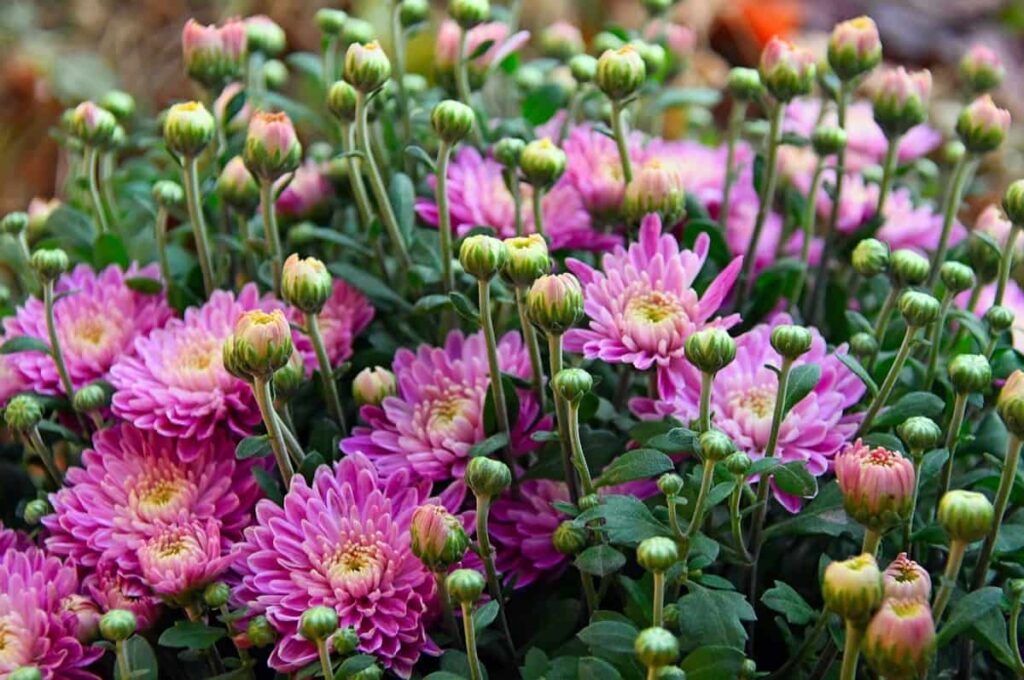
What is a polyhouse?
A polyhouse is a greenhouse that can be used for various agricultural purposes. We’ve covered the building with polythene to keep the inside climate from being affected by the weather outside. To what extent you customize your polyhouse to your demands and available resources is up to you. In the past, wooden frames were employed to hold up the main body of a polyhouse. For added stability and strength, contemporary polyhouses are built with stronger materials like G.I. steel or aluminum rods.
These materials ensure that even a little polyhouse can withstand severe weather. Hot regions in India, such as Uttar Pradesh and Rajasthan, are ideal locations for these modern polyhouses. Polythene sheets are then used to encase the interior framework, making it possible to control the temperature and humidity levels within the structure independently of the outside environment.
How many types of poly houses are there?
The polyhouse industry has seen extraordinary changes due to the present development. Polyhouses come in various designs and configurations depending on the materials used, the location, the harvest, and more. To a large extent, polyhouses can be separated into two distinct categories.
In case you missed it: Earning 8 Lakh Rupees from Spine Gourd Cultivation: A Success Story of Kantola/Teasle Gourd Farmer in India
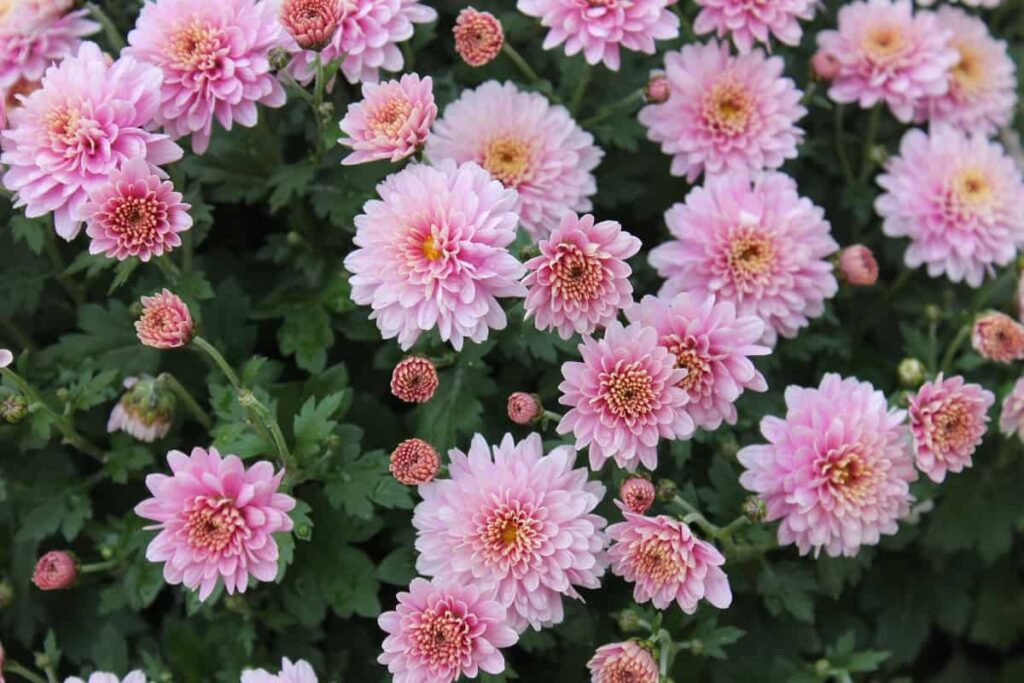
Polyhouses that rely on natural ventilation are the purest form of structure. Climate change in this form is hardly managed at all. Most of the success or failure of your plants and harvests will depend on the weather. Despite the availability of tools like the fogger, drip watering system, ventilation control, and pest control system, harvesting during the off-season remains impossible.
The environmental controls polyhouse is the cutting edge of the polyhouse varieties. It is equipped with several helpful extras, such as regulating the amount of light coming in, the humidity, the temperature, etc. The growing season is extended, and the most unusual types are available out of season thanks to these polyhouses. Producing crops that would otherwise be unachievable in a given location is another common purpose for polyhouses.
What is the difference between a polyhouse and a greenhouse?
Greenhouses are often constructed out of translucent materials so that the inside may have its unique microclimate. As the greenhouse cover, various materials such as glass, wood, polyethylene, and other similar substances are utilized to generate the microclimate. A polyhouse is a specific kind of greenhouse in which the cover is made of polypropylene rather than glass.
Polyhouse farming is the most common kind of greenhouse technology used in India due to its relatively inexpensive installation cost. Another kind of greenhouse technology, known as a lath house, employs wood for the cover. Compared to a glass house or greenhouse, a polyhouse is more cost-effective, yet the latter structure will last longer than the former.
In case you missed it: Earning 7 Crore Rupees from Donkey Rearing Business: A Success Story of an Entrepreneur in India
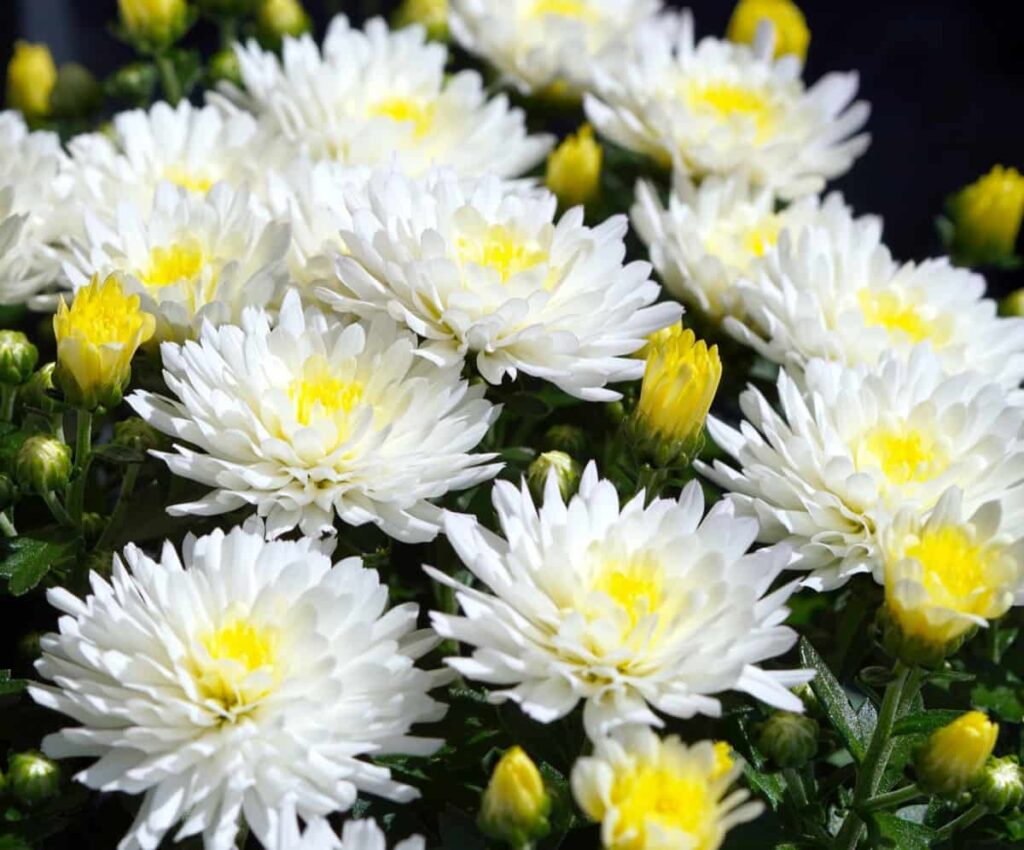
What are the advantages of polyhouse?
When shopping for groceries, quality is the primary consideration for most people. Having confidence in the demand for your product is unnecessary if it is of great quality. The crop’s progress is monitored in a polyhouse, a climate-controlled building with special machinery. When the outside temperature hits above 30 degrees Celsius in March, as in areas like Punjab, the polyhouse temperature also rises.
Growers can cultivate plants in climates that aren’t ideal for growing food because of the polyhouse’s artificial conditions. Depending on the kind of crop and how it is managed, polyhouse farming has the potential to enhance production by a factor of 10 to 12. Nutrient management, pest and disease control, weather, crop type, and other biological elements all have a role in determining crop production.
Earning 24 lakh rupees from polyhouse chrysanthemum cultivation
The success story of Mr. Rangayya
Mr. Rangayya is a vegetable farmer in Mahboobnagar district, Telangana. He owns 3 acres of land, which he used to cultivate different vegetables. However, he faced severe losses due to high temperatures, heavy rains, and unpredictable climate. He quickly stopped his cultivation and took a gap of one year. He worked as a supervisor in a small construction business. Even though he worked, he couldn’t support his family with little income. He wanted to start agriculture but was afraid of facing losses.
When things were going, one of his associates told him about polyhouse cultivation. This caught his attention, but he realized it was a heavy investment venture. Even though he knew that government provides subsidies, he was hesitant because this was all new to him. He took two months to learn about the cultivation and, in the meantime, gathered the capital. He took the risk and invested all his savings into polyhouse farming. He chose to cultivate chrysanthemums as these flowers have a constant demand in the market.
He started the venture, and within no time, he was successful in growing these flowers, and the yield he got was more than expected. He earned huge profits and cleared all his debts. How was he able to do this? Below we will learn the cultivation details of Mr. Rangayya’s chrysanthemum farm, his investment and profit analysis, and his experiences in becoming successful in cultivating the Chrysanthemum plants.
Plant selection, according to Mr. Rangayya
Mr. Rangayya chose Chrysanthemums to grow on his polyhouse farm. This is because while investigating what plants to cultivate, he learned that chrysanthemums have high and constant demand in the market. He also said many people told him to cultivate vegetables such as tomatoes and English cucumbers. Still, from his experience, you can get more income from these flower cultivation than from vegetables.
In case you missed it: Earning 10 Lakh Rupees from Bamboo Cultivation: A Sucess Story of a Bamboo Farmer in India
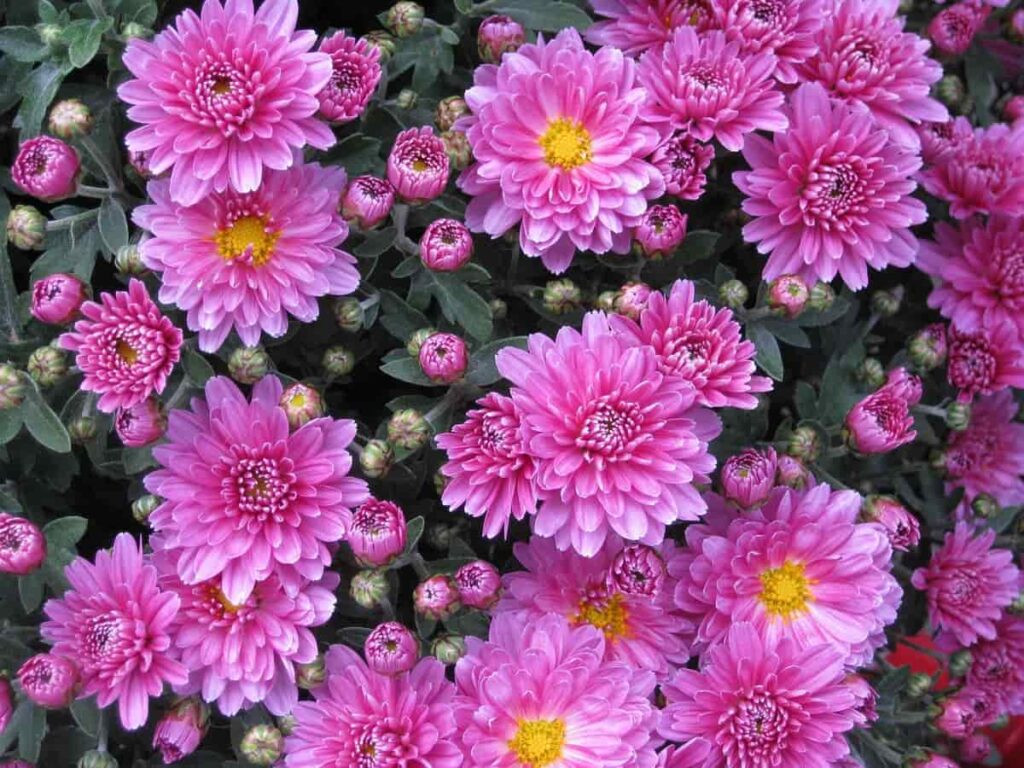
Also, these flowers are beautiful and are very suitable for polyhouse cultivation. We can get almost 3 to 4 times the yield when growing these vegetables in a polyhouse than on the ground. These flowers have high demand during festive seasons. One of the biggest advantages of polyhouse is that we can cultivate these flowers even during the off-season.
Mr. Rangayya chose white-colored chrysanthemums to cultivate on his polyhouse farm. He bought the saplings from Nasik. He says that the variety he chose lasts longer when harvested, which can help them stay fresh for a longer time during transportation. These flowers can stay fresh for 3 to 4 days upon harvesting.
Polyhouse construction details, according to Mr. Rangayya
Having to invest in polyhouses would be a huge financial burden for farmers. However, Mr. Rangayya says that with the help of the state government, you can receive a subsidy of up to 75% of the cost of constructing a poly house. He also said this helped him immensely to start his cultivation. It took him three months to finish setting up the interior and exterior of his polyhouse on his 3 acres of property.
After deducting the subsidies, the final price of this building came to approximately 20 lakhs. The initial outlay may seem huge, but you only need to do this once. The money will be returned to you in around three years as your income. Consequently, you can expect a significant increase in your revenue very quickly.
Chrysanthemum cultivation details, according to Mr. Rangayya.
For the cultivation of chrysanthemums, red soil is ideal, says Mr. Rangayya. As his land was already of red soil, he didn’t have to add any to his farm. If you don’t have red soil in your land, you better fill your polyhouse with red soil, says Mr. Rangayya. Once the polyhouse construction is completed, you must plow your land thoroughly. After plowing, you have to add chicken manure, animal manure, and cow manure to your farm, says Mr. Rangayya.
In case you missed it: How this Farmer Earning 60 Lakh Rupees from Thaiwan Pink Guava Cultivation
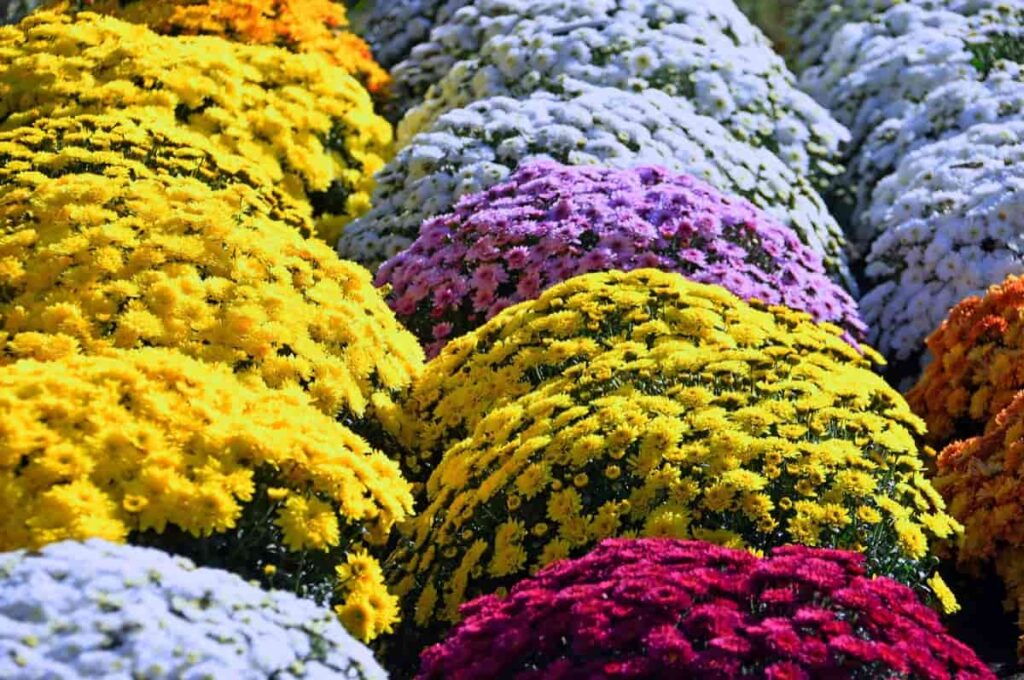
Once you finish adding the manures, you must plow your field again thoroughly. This helps all the manure and soil to mix properly. After the addition of manure, you have to make mounds. On each mound, there are six rows, and between each row and each plant in a row, there is a 15 cm distance. He planted nearly 1,20,000 plants per acre on his polyhouse farm. You don’t have to spread any mulching sheet to these plants, says Mr. Rangayya.
Regarding watering, Mr. Rangayya used a drip watering system to grow chrysanthemums properly. He says drip watering is ideal as it saves much water. Also, these plants don’t take much water to grow. To control the temperature in his polyhouse, Mr. Rangayya used foggers. These foggers spray water from the top of the polyhouse. The foggers should be switched on only for two seconds, preventing the water particles from touching the soil and will evaporate before touching the ground.
Also, to prevent excessive sunlight, the polythene sheets are rolled over the surface of the polyhouse preventing the excessive sunlight from entering the polyhouse. Fertilizers are also given to the plants through the fertigation process, but that is too rarely. Mr. Rangayya says that if one can amend the soil properly with manures at the time of land preparation, then he/she/they don’t need many fertilizers. However, coco peat is spread at the saplings stage, which helps preserve moisture and humidity in the polyhouse.
Mr. Rangayya used blue and yellow sticky plates on his farm to control the pest population. He says that polyhouse cultivation won’t attract any major pests and diseases. Only a small pest population will attack the plants, which sticky plates can control if needed insecticides. One should be very careful while harvesting these flowers. Harvesting scissors should be used to harvest these flowers, and flowers should be cut with the stalk. As these flowers are used for decoration purposes, you must ensure the stalk is presently attached to the flower.
In case you missed it: How this Farmer Earning 80000 Rupees from Spirulina Cultivation: Success Story of a Young Farmer in India
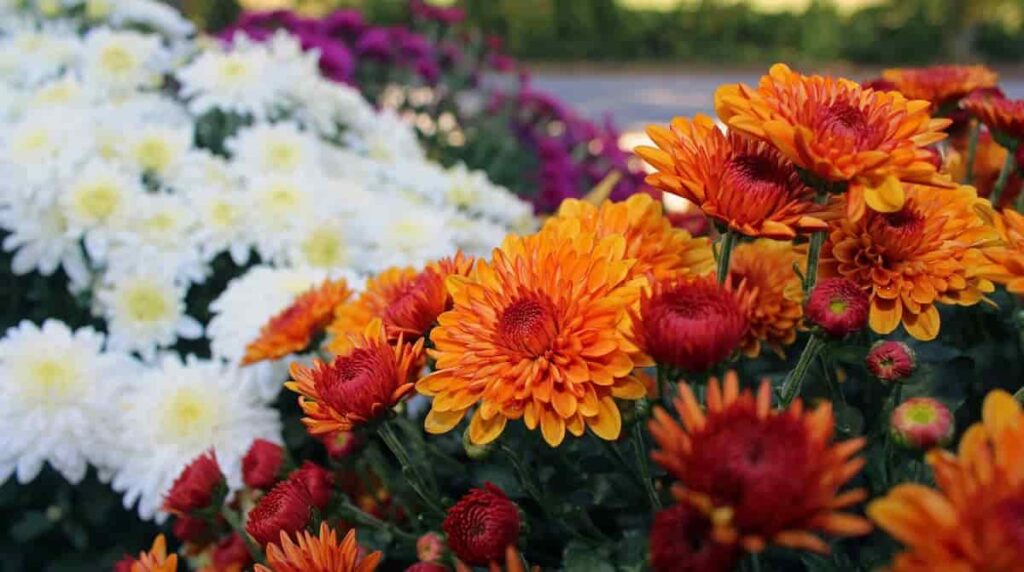
Investment and profit analysis of Mr. Rangayya’s chrysanthemum farm
Mr. Rangayya says that for his whole 3-acre farm, it took him nearly 12 lakh rupees as an investment, considering the one-time investment on a term loan basis. And when it comes to income, he sells his harvest of nearly 150 rupees per kg to the nearby market. You must note that these prices can fluctuate. He harvested nearly 8 tons per acre. This means his income is nearly 36 lakh rupees.
When the investment is erased from the income, his net profit would be nearly 24 lakh rupees per year. This is a huge profit for a farmer. In this way, Mr. Rangayya is earning lakhs of rupees. He is now debt free and happy that he started his chrysanthemum polyhouse farm. He advises young people to start polyhouse cultivation since it has huge potential for higher profits.
- Types of Pesticides Used in Agriculture: A Beginner’s Guide
- Economical Aquaculture: A Guide to Low-Budget Fish Farming
- 15 Common Planting Errors That Can Doom Your Fruit Trees
- How to Make Houseplants Bushy: Effective Tips and Ideas
- Innovative Strategies for Boosting Coconut Pollination and Yield
- Pollination Strategies for Maximum Pumpkin Yield
- The Complete Guide to Chicken Fattening: Strategies for Maximum Growth
- Natural Solutions for Tulip Problems: 100% Effective Remedies for Leaf and Bulb-Related Issues
- Revolutionizing Citrus Preservation: Towards a Healthier, Greener Future
- Natural Solutions for Peony Leaf and Flower Problems: 100% Effective Remedies
- Maximizing Profits with Avocado Contract Farming in India: A Comprehensive Guide
- Natural Solutions for Hydrangea Problems: 100% Effective Remedies for Leaf and Flowers
- The Ultimate Guide to Choosing the Perfect Foliage Friend: Bringing Life Indoors
- From Sunlight to Sustainability: 15 Ways to Use Solar Technology in Agriculture
- The Ultimate Guide to Dong Tao Chicken: Exploring from History to Raising
- The Eco-Friendly Makeover: How to Convert Your Unused Swimming Pool into a Fish Pond
- Mastering the Art of Delaware Chicken Farming: Essentials for Healthy Backyard Flocks
- 20 Best Homemade Fertilizers for Money Plant: DIY Recipes and Application Methods
- How to Craft a Comprehensive Free-Range Chicken Farming Business Plan
- Brighten Your Flock: Raising Easter Egger Chickens for Beauty and Bounty
- How to Optimize Your Poultry Egg Farm Business Plan with These Strategies
- Subsidy for Spirulina Cultivation: How Indian Government Schemes Encouraging Spirulina Farmers
- Ultimate Guide to Raising Dominique Chickens: Breeding, Feeding, Egg-Production, and Care
- Mastering the Art of Raising Jersey Giant Chickens: Care, Feeding, and More
- Ultimate Guide to Raising Legbar Chickens: Breeding, Farming Practices, Diet, Egg-Production
- How to Raise Welsummer Chickens: A Comprehensive Guide for Beginners
- How to Protect Indoor Plants in Winter: A Comprehensive Guide
- Ultimate Guide to Grow Bag Gardening: Tips, Tricks, and Planting Ideas for Urban Gardeners
- Guide to Lotus Cultivation: How to Propagate, Plant, Grow, Care, Cost, and Profit
- Agriculture Drone Subsidy Scheme: Government Kisan Subsidy, License, and How to Apply Online
- Ultimate Guide to Raising Araucana Chickens: Breed Profile, Farming Economics, Diet, and Care
- Bringing Hydroponics to Classroom: Importance, Benefits of Learning for School Students
- Ultimate Guide to Raising Polish Chickens: Breed Profile, Farming Economics, Diet, and Care
- Ultimate Guide to Raising Australorp Chickens: Profile, Farming Economics, Egg Production, Diet, and Care
- Silkie Chicken Farming: Raising Practices, Varieties, Egg Production, Diet, and Care
- Sussex Chicken Farming: Raising Practices, Varieties, Egg Production, Diet and Care